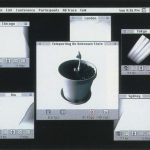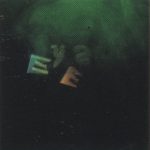Eduardo Kac
Most Recent Affiliation:
- University of Kentucky
Committee Member:
Art Works:
-

Ornitorrinco
Categories: [Installation]
[SIGGRAPH 1992] -

Teleporting an Unknown State
Categories: [Installation] [Interactive & Monitor-Based]
[SIGGRAPH 1996] -

Omen
Categories: [2D & Wall-Hung]
[SIGGRAPH 1991]
Writings and Presentations:
-
Title:
Aspects of the Aesthetics of Telecommunications
Writing Type: Paper
Author(s):
Exhibition: SIGGRAPH 1992: Art Show
Abstract Summary:For the past fifteen years, increasing numbers of artists around the world have been working in a collaborative mode using telecommunications. In their “works,” which we shall refer to as “events,” images and graphics are not created as the ultimate goal or the final product, as is common in the fine arts. Employing computers, video, modems, and other devices, these artists use visuals in a much larger, interactive, bi-directional communication context. Images and graphics are created not simply to be transmitted by an artist from one point to another, but to spark a multidirectional visual dialogue with other artists and participants in remote locations. This visual dialogue assumes that images will be changed and transformed throughout the process in the same way that speech gets changed-interrupted, complemented, altered and reconfigured-in a spontaneous face-to-face conversation. Once an event is over, images and graphics stand not as the “result,” but as documentation of the process of visual dialogue promoted by the participants. This unique ongoing experimentation with images and graphics develops and expands the notion of visual thinking by relying primarily on the exchange and manipulation of visual materials as a means of communication. The art events created by telematic or telecommunication artists take place as a movement that animates and unbalances networks structured with relatively accessible interactive media such as telephone, facsimile (fax), personal computers, e-mail, and slow-scan television (SSTV). More rarely, radio, live television, videophones, satellites, and other less accessible means of communication come into play. But to identify the media employed in these “events” is not enough. Instead, one must do away with prejudices that cast off these media from the realm of “legitimate” artistic media and investigate these events as equally legitimate artistic enterprises. This essay partially surveys the history of the field and discusses art events that were either motivated by or conceived specially for telecommunications media. The essay attempts to show the transition, from the early stages, when radio provided writers and artists with a new spatiotemporal paradigm, to a second stage, in which telecommunications media, including computer networks, have become more accessible to individuals and through which artists start to create events, sometimes of global proportions, in which the communication itself becomes the work. Telecom munications art on the whole is, perhaps, a culmination of the process of dematerialization of the art object epitomized by Duchamp and pursued by artists associated with the conceptual art movement, such as Joseph Kossuth. If now the object is totally eliminated and the artists are absent as well, the aesthetic debate finds itself beyond action as form, beyond idea as art. It founds itself in the relationships and interactions between members of a network.
[Download PDF]
Title: Internet Hybrids and the New Aesthetic of Worldwide Interactive Events
Writing Type: Essay
Author(s):
Exhibition: SIGGRAPH 1996: The Bridge
Abstract Summary:This essay discusses interactive art events realized on the Internet in conjunction with other electronic media, such as television, radio, telephones, and telerobotics. The essay includes references to material that can be immediately accessed on the Internet. The reader is invited to read by the glow of the CRT, letting digital strokes carry him or her from one country to another.
[Download PDF]
Title: Telematic and Telepresence Installations
Writing Type: Sketch / Art Talk
Author(s):
Exhibition: SIGGRAPH 1996: The Bridge
Abstract Summary:My work with telecommunications started in 1985, when I created a virtual gallery that could be accessed via the videotext system. Since 1989, I have been working with Ed Bennett on the Ornitorrinco project of telepresence installations. The basic structure of these installations is comprised of a wireless telerobot, regular phone lines (both for vision and remote control), and remote spaces. Viewers become participants as they transport themselves to the remote body and navigate the remote space freely by pressing the keys on a familiar telephone.
[Download PDF]
Role(s):




